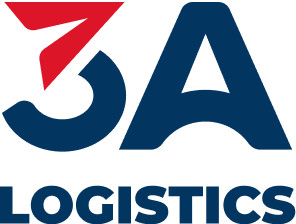In recent days, construction sites for dredging and upgrading maritime channels have been bustling around the clock in Vietnam. Projects involving the transformation and expansion of maritime routes into ports in the South Nghi Son area (Thanh Hoa), upgrading the Cai Mep – Thi Vai shipping route, and constructing channels for large-tonnage vessels on the Hau River are in full swing. These projects are being accelerated to ensure the timely completion and safe operation of these ports, ready to welcome large cargo ships.
According to the Vietnam Maritime Administration, in recent years, the world’s cargo ship fleet has been steadily increasing in size, particularly the latest generation of container ships with capacities ranging from 23,000 to 24,000 TEUs. Despite a decrease in the number of vessels in the Vietnamese fleet, there has been an increase in total capacity and cargo tonnage, with a growth rate of over 7% in 2022.
 Siêu tàu OOCL Spain chở được 146km container
Siêu tàu OOCL Spain chở được 146km container
Recently, many Vietnamese ports have successfully welcomed large container ships. Notably, the Cai Mep International Terminal (CMIT) received vessels with a deadweight tonnage (DWT) of over 214,000, while the Gemalink International Port accommodated super vessels with a DWT of more than 232,000 and a capacity of up to 24,188 TEU. In northern Vietnam, the Hai Phong International Container Terminal (HICT) in Lach Huyen also handled container ships with a DWT of over 144,000.
Furthermore, several ports are proposing to accept larger-tonnage vessels than originally designed. This includes ports such as Cai Lan (Quang Ninh), Nghi Son (Thanh Hoa), Chan May (Thua Thien-Hue), Saigon, and Ben Nghe (Ho Chi Minh City). However, according to Pham Anh Tuan, the General Director of Portcoast, this presents a challenge for the maritime sector. If the infrastructure, including maritime channels, turning basins, and port facilities, cannot accommodate these larger ships, alternative arrangements must be made to direct them to other areas or foreign ports.
A maritime expert emphasized that preparing to receive larger vessels requires a comprehensive approach, not limited to upgrading port infrastructure. Adequate financial resources are needed, but the current investment rate in the maritime industry is not commensurate with its potential.
According to the leadership of Portcoast, the increase in vessel size has exceeded the initial forecasts. In 2006, the trend was for panamax-sized ships (55,000-80,000 DWT) or suezmax-sized ships (around 140,000-200,000 DWT). However, today’s world has seen the development of vessels with DWTs exceeding 240,000 and a capacity of up to 24,000 TEU. Existing ports desiring to accommodate these larger vessels must evaluate their capabilities and infrastructure for necessary upgrades, taking into account the safety of maritime operations.
To meet growing demands and stay in line with industry trends, many companies are planning to expand and upgrade their existing infrastructure. For example, during the period from 2021 to 2025 and looking forward to 2030, Gemadept Corporation plans to continue expanding its scale with several new seaport projects. This includes the second phase of the Gemalink Deep-Water Port with a 39-hectare area and a capacity of 1.5 million TEU per year, accommodating vessels with a DWT of 250,000. Phase 2 of this project is expected to be completed by 2027.
The Nam Dinh Vu Port project (Phase 3) is also underway to increase capacity to 600,000 TEU per year for containers and 3 million tons per year for general cargo. The port is designed to receive vessels with a DWT of up to 48,000.
Vietnam National Shipping Lines (VIMC) has initiated numerous projects, such as investing in the construction of berths 3 and 4 at Lach Huyen Port, Phase 2 of VIMC Dinh Vu Port, and the development of floating jetties at various anchorage points.
In the central region, Da Nang Port is investing in deepening its harbor and enhancing the capacity of Tien Sa Port. The port also proposes investments in two new startup berths at Lien Chieu Port.
In Ho Chi Minh City, VIMC plans to complete the Saigon-Hiep Phuoc Port project and explore the second phase of the Saigon-Hiep Phuoc Port. Additionally, it aims to cooperate with the MSC shipping company in researching the investment of a large-scale international container transshipment port in Can Gio.
By 2030, VIMC will explore investment in the development of ports for large-tonnage vessels in the Cai Mep Ha area and passenger terminal berths.
According to Tran Tuan Hai, Head of the Communication Department at Vietnam National Shipping Lines, new ports are designed with consideration of appropriate infrastructure planning. Meanwhile, long-standing ports are adjusted in terms of technology and equipment to accommodate the tonnage of vessels approved for reception, ensuring maritime safety.
In conclusion, Vietnam is actively working to improve its ability to receive and operate large cargo ships, thereby meeting the increasing demands of global maritime trade and enhancing the country’s position on the world maritime map.












